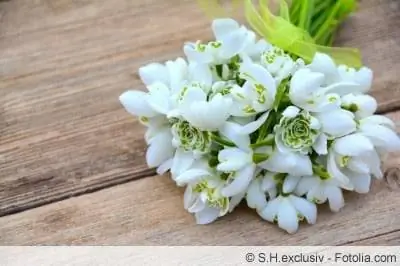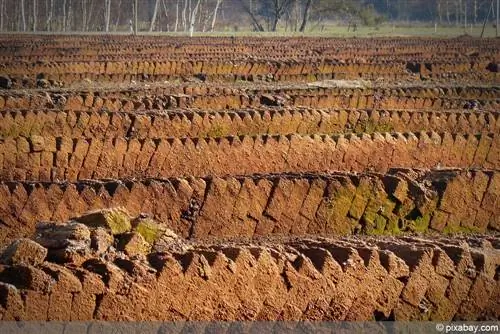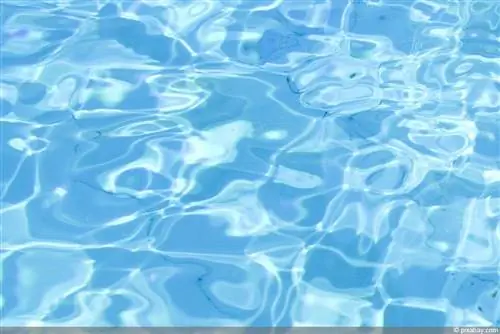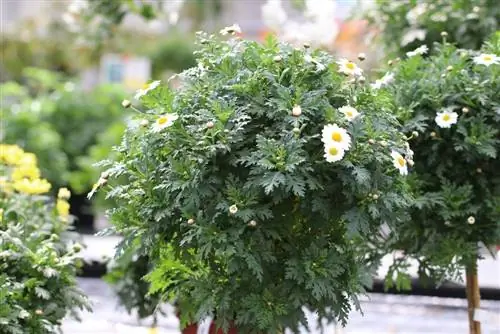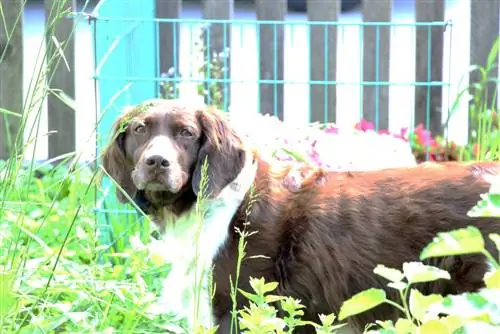- Author admin [email protected].
- Public 2023-12-17 03:39.
- Last modified 2025-01-24 12:45.
The regular media coverage of poisonous plants makes hobby gardeners more aware of their own ornamental and useful plants. This is even more true when there are children and pets in the garden, on the balcony or in the house. Anyone who refrains from cultivating a plant species at the slightest suspicion is missing out on some of the magic of flowers. Given the significant differences in toxic content, appropriate handling can reduce or completely eliminate any potential hazard. Stop wondering: Are snowdrops poisonous? This is what you should know!
Slightly toxic due to alkaloids
As a genus of plants, snowdrops belong to the amaryllis family. This fact implies that there are various alkaloids in the plant sap. Alkaloids are more than 10,000 naturally occurring organic compounds. The broad definition also includes well-known substances such as caffeine in coffee plants, capsaicin in pepper plants, morphine in opium poppy plants or the autumn crocus alkaloid colchicine. It follows that the mere presence of an alkaloid does not necessarily mean life-threatening toxicity. However, the vast majority of these compounds are toxic to a greater or lesser extent. Regarding the toxic content of snowdrops, the connection is as follows:
- The flower bulbs contain slightly toxic amaryllidaceous alkaloid
- Leaves and flowers mainly contain lycorine, tazettin and galantamine
The highest concentration of alkaloids is in the bulbs, while it is hardly detectable in the above-ground parts of the plant.
People and animals affected
Snowdrops only have toxic effects after consumption. Simply sniffing it once has no negative consequences. This applies to both people and animals, especially small pets such as dogs, cats and rodents. This is how the symptoms of poisoning manifest themselves:
- Increased salivation
- Nausea and vomiting
- Stomachache
- Diarrhea
- Sweats
- Dizziness
Scientists have not yet determined a critical dose. Experience has shown that eating more than 3 snowdrop bulbs can trigger the symptoms mentioned. If a significantly larger amount of snowdrop plant parts is eaten, symptoms of paralysis can occur in the worst case.
First aid measures
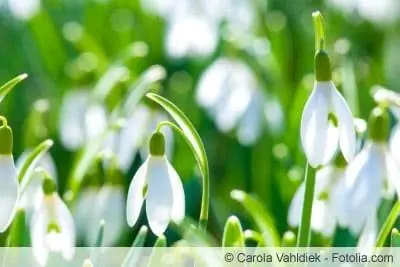
After intentionally or unintentionally consuming up to 3 flower bulbs, the Bonn Poison Center recommends administering sufficient fluids, such as non-carbonated water or tea. If an excess amount of leaves and flowers has been ingested, your family doctor should be consulted. This decides whether the administration of a charcoal preparation is sufficient or whether detoxification in the clinic is necessary.
If it is an affected small child, consultation with the responsible pediatrician is definitely recommended, especially if the amount consumed cannot be precisely determined.
If symptoms of snowdrop poisoning appear on your pet to a large extent, you should at least contact the veterinarian by telephone to advise on how to proceed.
Tip:
Lilies of the valley, which at first glance look like snowdrops, are much more poisonous. That's why lilies of the valley were named poisonous plant of the year in 2014, while snowdrops don't even come close to being nominated.
Location and distribution
Snowdrops are native throughout Europe, from Asia Minor to the Caspian Sea. Since they tend to go wild, they colonize large and small clearings in deciduous forests outside the gardens, thrive along embankments at the side of the road or in forest meadows. In the bed, the early bloomers are preferably planted in semi-shady locations under tall trees.
If snowdrops appear in your garden without you knowingly planting them, busy ants are responsible for the flowers. The insects are crazy about the seeds because they contain a tasty nutrient. On the way to the nest, the ants eat up some of the nutrient bodies, leave the seeds carelessly lying around and in no time a young snowdrop sprouts from them.
Appearance
To positively identify a snowdrop, the following attributes are important:
- Two to three basal, linear leaves form the base
- A flower appears on the 2 to 30 centimeter high flower stalk
- 3 white bracts unfold on the outside and 3 smaller, green-white petals on the inside
- The spherical, 1 to 2 centimeter thick bulb serves as a survival organ
The flowering period extends from February to April. Some rare species bloom into May. Therefore, the flowering period can clash with the more poisonous lilies of the valley.
Tips for handling
If there are no children or pets in the garden or on the balcony, snowdrops pose no danger despite their slight poisonous content. In all other cases, you don't necessarily have to miss out on the pretty spring flowers if the following precautions are taken:
Putting onions in a wire basket
Placing flower bulbs in a wire basket not only protects against browsing by pests such as voles. This measure protects curiously digging dogs or cats from poisoning themselves with the nodules. How to do it right:
- Dig small planting holes 15 centimeters deep at planting time in September
- Position a wire basket with the lid open in each pit
- Spread a layer of sand on the sole of 2-3 centimeters
- Fill in the excavation and plant the snowdrop bulbs 7-8 centimeters deep
- Close the wire mesh lid tightly and cover with soil
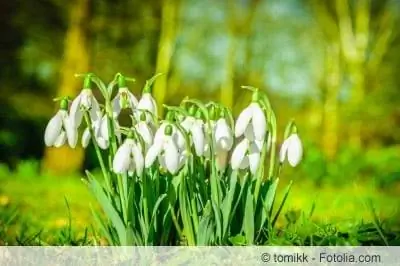
If a wire basket is used solely to protect against voles, there is no need for a cover because the pests do not dare to come to the surface. If the mesh also serves as protection against digging pets, the close-meshed lid becomes more relevant. At least your four-legged friend can't get close to the flower bulb with its concentrated poison content. Children thirsty for knowledge on an expedition through the garden are only partially deterred from eating food by this precaution.
Cuttings in the household waste
After flowering, the bulb absorbs all parts of the plant above ground to assimilate their nutrients. If the wilted leaves and flowers of snowdrops bother you, cut them off. Disposal in the compost should be avoided if pets, grazing livestock or horses could get to it. In this case, the clippings go into the household waste. This should also be done if unwanted specimens have been pulled out of the ground along with the bulb.
The same applies to snowdrops that adorned the home in a vase, as an arrangement or in a planter and have now withered. Since the flower stems release toxins into the flower water, vases should be placed out of the reach of children and pets.
Tip:
The cultivation of snowdrops in the house is completely avoided if small children are left unattended, even for a short time. The risk of a flower bulb being eaten is too great. These concerns also apply to domestic cats and puppies.
Promising healing powers
The positive side of the coin should not go unmentioned in this context. The alkaloid galantamine, which dominates snowdrops, requires the above-mentioned precautionary measures in the garden, but it also holds hopeful healing power against a scourge of humanity. Researchers have known about its inhibitory effect on Alzheimer's since the mid-1950s. The alkaloid at least delays the progression of dementia by eliminating a deficiency in neutrotransmitters. The small snowdrop and the Caucasian snowdrop primarily provide galantamine in the desired composition. Research with snowdrops in this regard is far from complete and gives reason to hope for further progress.
In addition, the ingredients of snowdrops enjoy a large following in Bach flower therapy. Their flower essence is said to strengthen hope for a new beginning and to accept transience more easily.
Conclusion
The question: 'Are snowdrops poisonous?' is definitely justified. The alkaloids contained in the plant sap only make consumption of more than 3 flower bulbs unsafe. Consequently, the precautions described here should be taken when small children or pets may be near snowdrops without supervision. In addition, the clippings have no place on the compost if grazing cattle or horses get there. Otherwise, there is nothing wrong with planting the enchanting early bloomers in the garden and on the balcony so that they herald the approaching spring with their white flowers.

